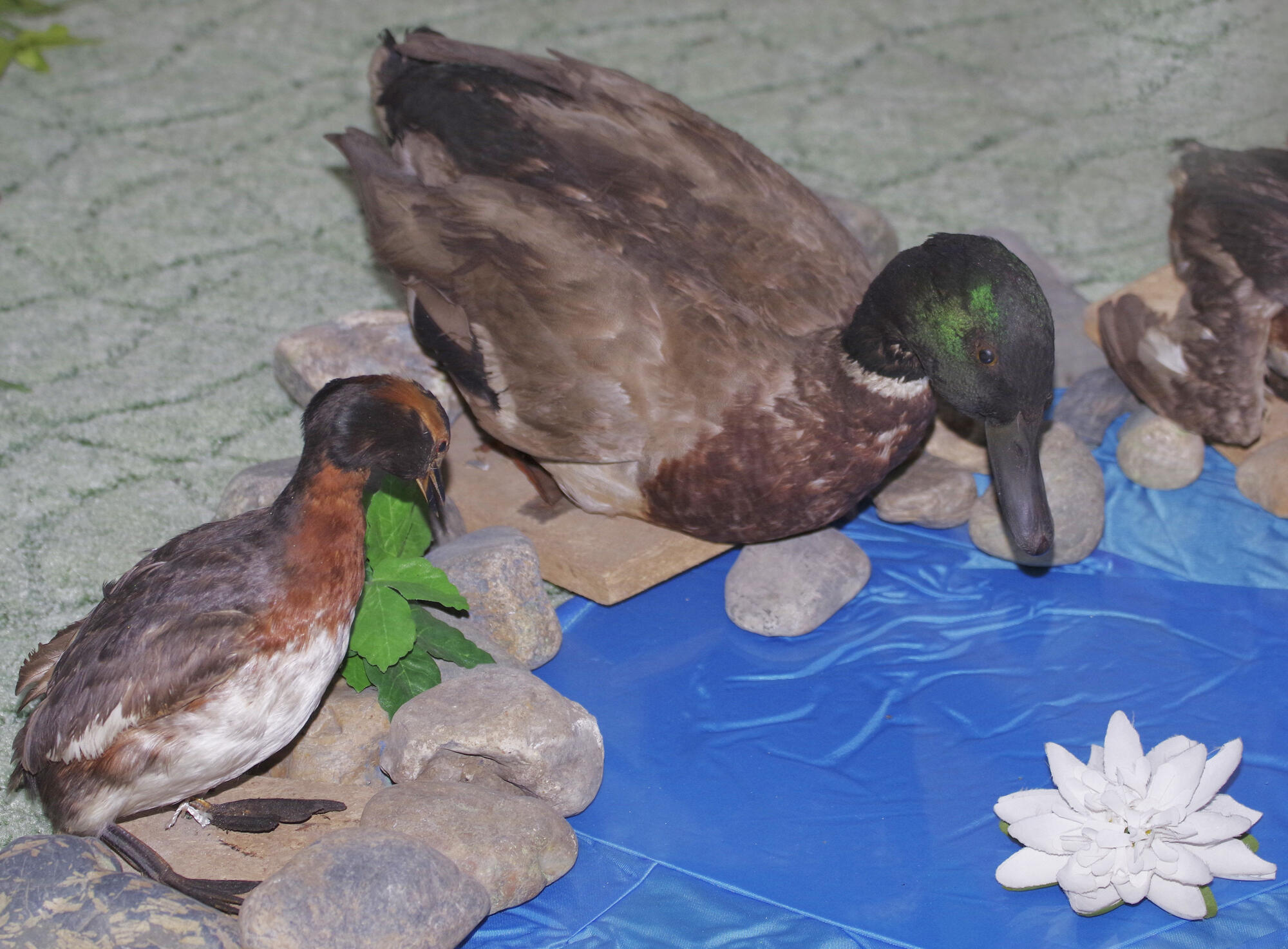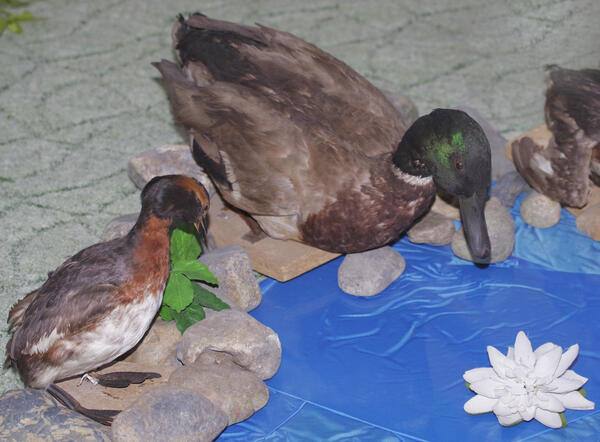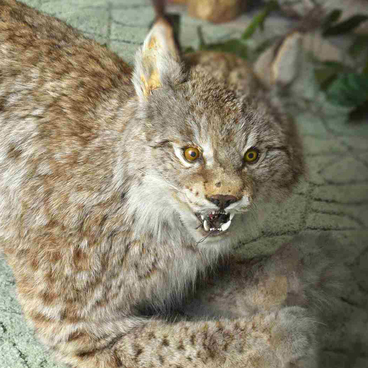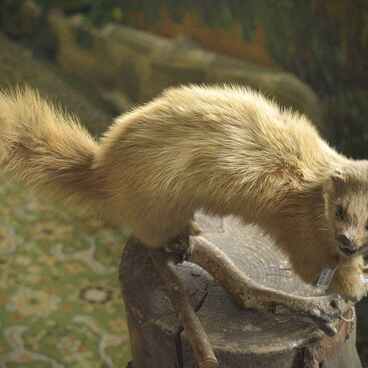The mallard is the largest and most ubiquitous duck. This bird adapts to any natural environment so well that one can come across it on all the continents with the exception of the Antarctic. Mallards inhabit various water bodies with fresh, brackish or saline water. However, they do avoid lakes with completely bare shores, mountain rivers and other streams with a fast current. One can often encounter these birds in an urban environment. And if ponds and canals do not freeze, mallards remain in them even during colder seasons. The male is easy to spot owing to the distinctive colors of its plumage. It has a green head and neck, while the female’s body is uniformly chestnut brown. During the mating season, the male’s beak is an ochre-olive color, often yellow at the tip. The female’s bill is usually dark grey with orange edges, and there are always several black spots at its base.
Mallards are not picky eaters, they are capable of adjusting their diets according to the conditions in the surrounding environment. They primarily eat aquatic plants, small invertebrates, insects, shellfish, tadpoles, crustaceans and even frogs at times. They feed in shallow waters. A plate of hard horny tissue in its beak helps it filter food. Mallards often raise their lower bodies and tails up while in a water body in order to reach plants at the bottom of it.
Typically, mallards build their nests near the water and hide them really well in dense bulrush or reeds, under trees and bushes, and among wind-fallen trees and brushwood. Outside of the mating season, these birds stay in their flocks, which can consist of several hundred mallards. On land, they appear awkward because of their characteristic walk and slow movements. But if these birds sense danger, they quicken their pace substantially and disappear among dense vegetation as fast as possible. An injured mallard is capable of diving and swimming dozens of meters under water in order to escape. In the wild, its enemies include various predators. Eagles, falcons, Eurasian otters and reptiles all hunt these birds. Many of their eggs do not survive after the nest is attacked by dogs or foxes. The number of mallards has not reduced significantly in the wild owing to these birds’ ability to adapt their diet and lifestyle to surrounding conditions.
Mallards are not picky eaters, they are capable of adjusting their diets according to the conditions in the surrounding environment. They primarily eat aquatic plants, small invertebrates, insects, shellfish, tadpoles, crustaceans and even frogs at times. They feed in shallow waters. A plate of hard horny tissue in its beak helps it filter food. Mallards often raise their lower bodies and tails up while in a water body in order to reach plants at the bottom of it.
Typically, mallards build their nests near the water and hide them really well in dense bulrush or reeds, under trees and bushes, and among wind-fallen trees and brushwood. Outside of the mating season, these birds stay in their flocks, which can consist of several hundred mallards. On land, they appear awkward because of their characteristic walk and slow movements. But if these birds sense danger, they quicken their pace substantially and disappear among dense vegetation as fast as possible. An injured mallard is capable of diving and swimming dozens of meters under water in order to escape. In the wild, its enemies include various predators. Eagles, falcons, Eurasian otters and reptiles all hunt these birds. Many of their eggs do not survive after the nest is attacked by dogs or foxes. The number of mallards has not reduced significantly in the wild owing to these birds’ ability to adapt their diet and lifestyle to surrounding conditions.



